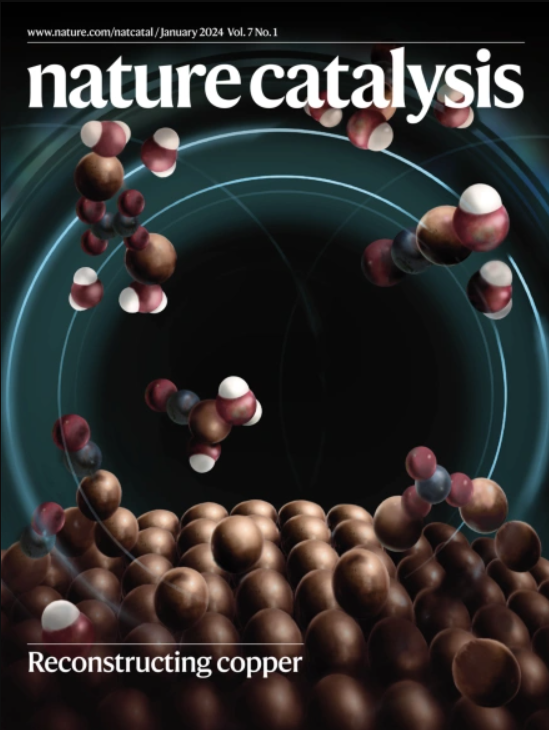Cobalt hydride-mediated photocatalytic semihydrogenation of acetylene impurities for continuous-flow production of polymer-grade ethylene
IF 44.6
1区 化学
Q1 CHEMISTRY, PHYSICAL
引用次数: 0
Abstract
The semihydrogenation of acetylene impurities in crude ethylene streams to produce polymer-grade ethylene is important for the polyethylene industry. Photocatalytic reduction offers a promising solution in terms of sustainability. However, the current state of photocatalytic acetylene semihydrogenation systems has shown limited activity. Here we report a metal-catalysed hydrogen atom transfer pathway to promote photocatalytic acetylene semihydrogenation via rapid formation of cobalt hydride species. Applying a N,N′-bis(salicylidene)ethylenediamine cobalt catalyst with an electron-donating ligand that energetically favours cobalt hydride formation in pure acetylene yields excellent acetylene-to-ethylene reduction performance with near-unity selectivity, a turnover number of 29,401 and a turnover frequency of 2.14 s−1. Most importantly, we engineered a continuous-flow photoreactor, by which crude ethylene containing 1.10 vol% acetylene can be steadily converted into polymer-grade ethylene continuously over 50 h. Despite the ease of fine-tuning their reactivity, high-performance homogeneous photocatalysts competent for acetylene semihydrogenation are scarce. Here the authors introduce an effective cobalt catalyst for the production of polymer-grade ethylene, which is amenable to scale-up in a continuous-flow photoreactor.


钴氢化介导乙炔杂质光催化半加氢连续流生产聚合级乙烯
粗乙烯流中乙炔杂质半加氢生产聚合物级乙烯对聚乙烯工业具有重要意义。光催化还原在可持续性方面提供了一个很有前途的解决方案。然而,目前光催化乙炔半加氢体系的活性有限。本文报道了一种金属催化的氢原子转移途径,通过快速形成氢化钴来促进光催化乙炔半加氢。采用N,N ' -双(水杨基)乙二胺钴催化剂,配以能大力促进纯乙炔中钴氢化形成的供电子配体,可获得优异的乙炔-乙烯还原性能,选择性接近统一,周转率为29,401,周转率为2.14 s−1。最重要的是,我们设计了一个连续流光反应器,通过该反应器,含有1.10 vol%乙炔的粗乙烯可以在50小时内连续稳定地转化为聚合物级乙烯。
本文章由计算机程序翻译,如有差异,请以英文原文为准。
求助全文
约1分钟内获得全文
求助全文
来源期刊

Nature Catalysis
Chemical Engineering-Bioengineering
CiteScore
52.10
自引率
1.10%
发文量
140
期刊介绍:
Nature Catalysis serves as a platform for researchers across chemistry and related fields, focusing on homogeneous catalysis, heterogeneous catalysis, and biocatalysts, encompassing both fundamental and applied studies. With a particular emphasis on advancing sustainable industries and processes, the journal provides comprehensive coverage of catalysis research, appealing to scientists, engineers, and researchers in academia and industry.
Maintaining the high standards of the Nature brand, Nature Catalysis boasts a dedicated team of professional editors, rigorous peer-review processes, and swift publication times, ensuring editorial independence and quality. The journal publishes work spanning heterogeneous catalysis, homogeneous catalysis, and biocatalysis, covering areas such as catalytic synthesis, mechanisms, characterization, computational studies, nanoparticle catalysis, electrocatalysis, photocatalysis, environmental catalysis, asymmetric catalysis, and various forms of organocatalysis.
 求助内容:
求助内容: 应助结果提醒方式:
应助结果提醒方式:


